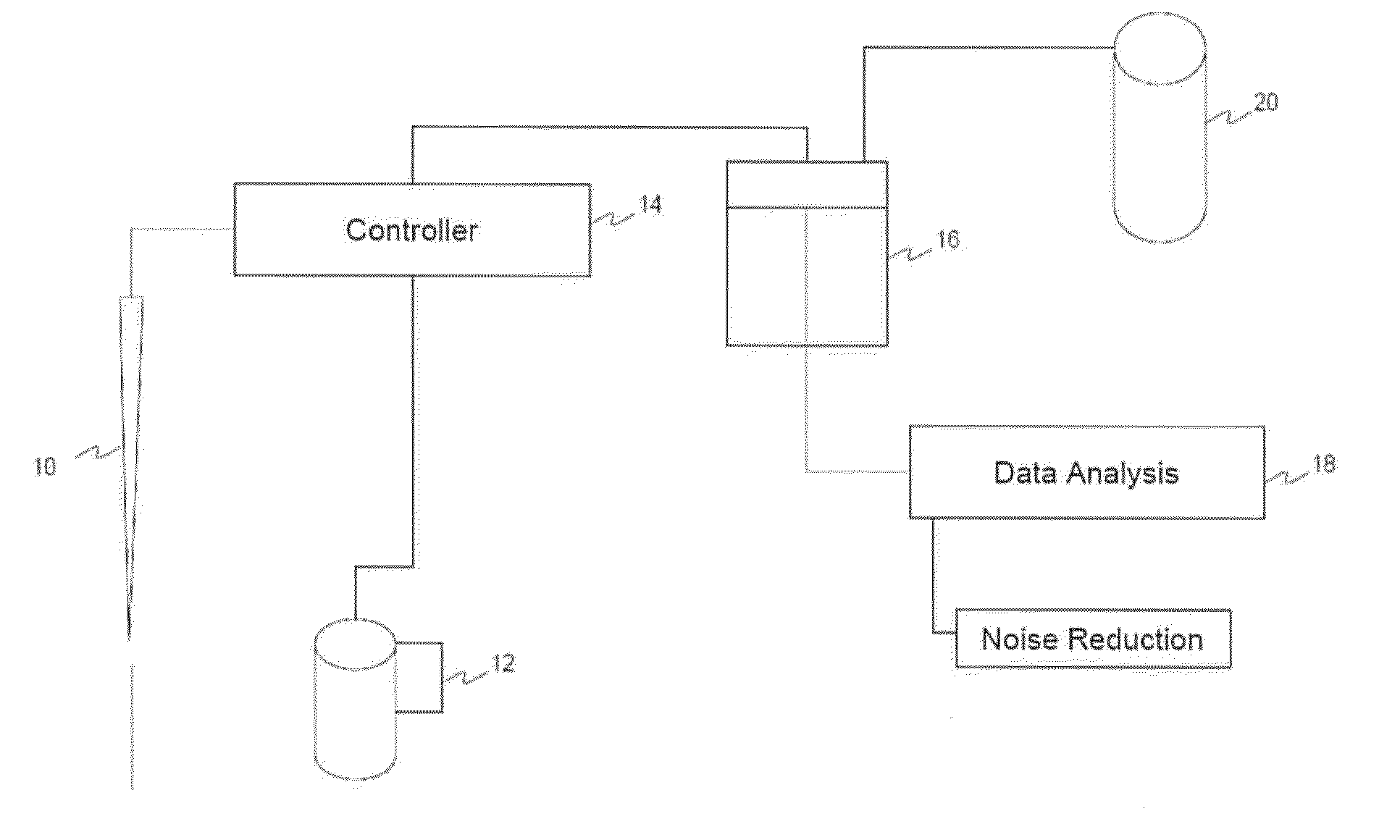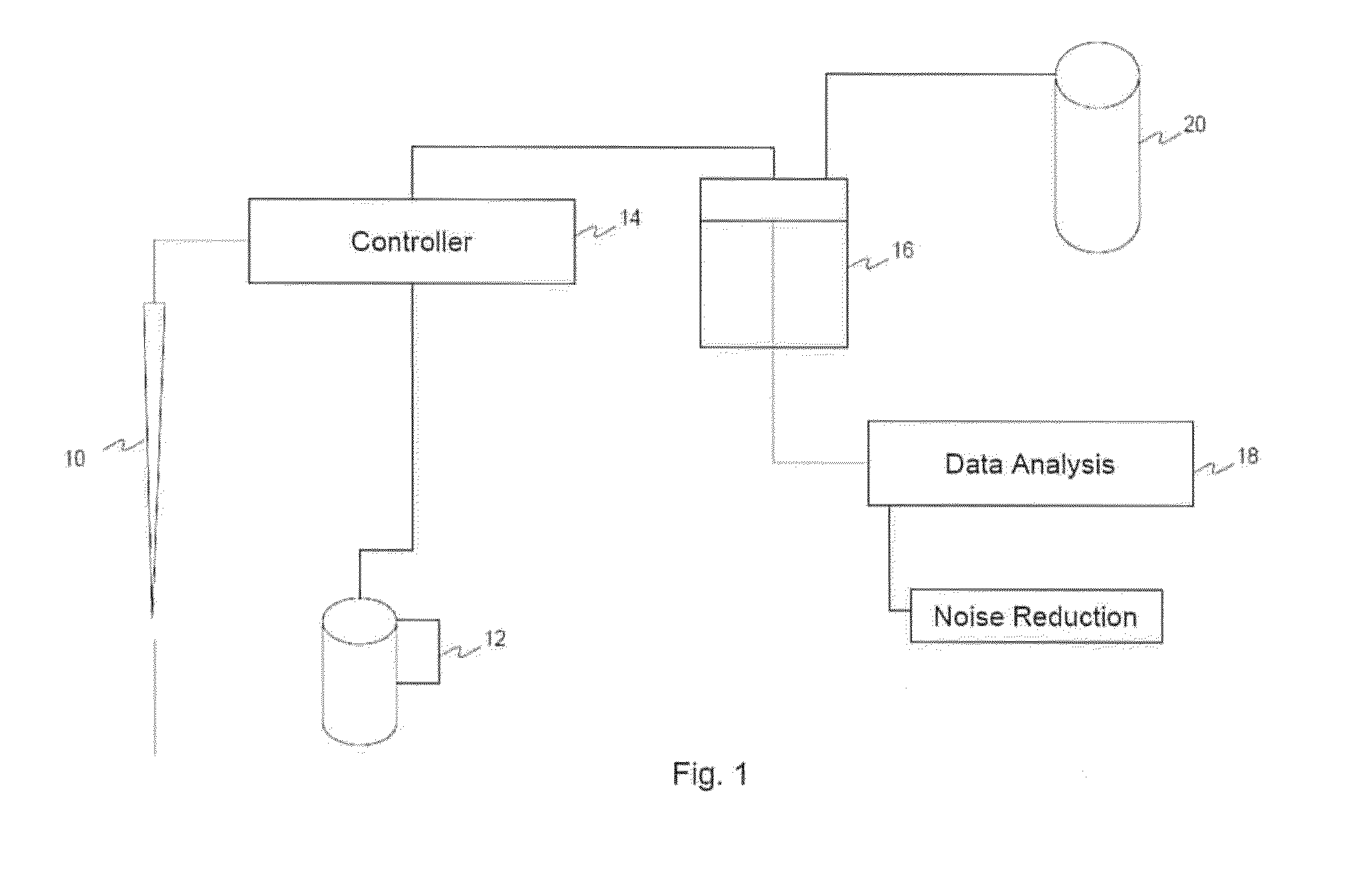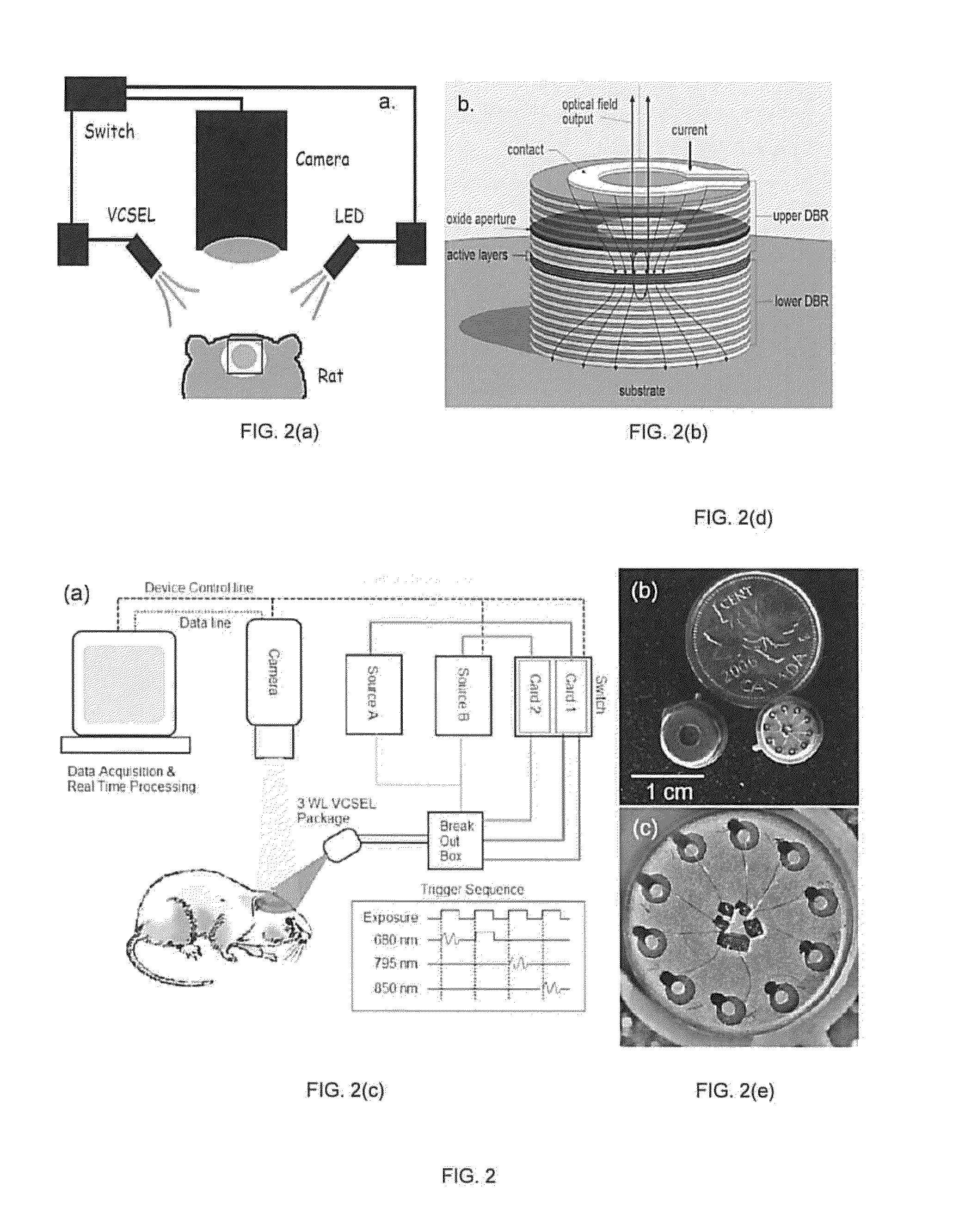System and method for optical imaging with vertical cavity surface emitting lasers
a laser and cavity surface technology, applied in the field of optical imaging technologies, can solve the problems of frequent imaging, reduced image quality, and reduced image quality, and achieve the effect of reducing spatial noise and temporal nois
- Summary
- Abstract
- Description
- Claims
- Application Information
AI Technical Summary
Benefits of technology
Problems solved by technology
Method used
Image
Examples
example of implementation
[0049]The invention is further explained by reference to an example of an implementation thereof. The results indicated below are based on use of the example implementation.
[0050]In one implementation, oxide-confined VCSELs are used, which are available commercially, and provide wavelengths as low as 670 nm, power levels in excess of 1 mwatt, a circular beam shape, low noise, over a GHz modulation bandwidth, and good control of the mode shape and optical beam properties. Such VCSELs are stable and have low values of relative intensity noise (RIN). Power efficiency, small size, and low operating currents of VCSELs. (˜few mA) minimize the required operating power, and heat dissipation requirements, further improving the suitability of VCSELs attractive for optical imaging applications.
[0051]The VCSEL may be powered by a Keithley 6221 current source, with waveform capability. A silica-based tissue phantom may be used as a uniform reflecting surface, to allow evaluation and optimization...
PUM
 Login to View More
Login to View More Abstract
Description
Claims
Application Information
 Login to View More
Login to View More - R&D
- Intellectual Property
- Life Sciences
- Materials
- Tech Scout
- Unparalleled Data Quality
- Higher Quality Content
- 60% Fewer Hallucinations
Browse by: Latest US Patents, China's latest patents, Technical Efficacy Thesaurus, Application Domain, Technology Topic, Popular Technical Reports.
© 2025 PatSnap. All rights reserved.Legal|Privacy policy|Modern Slavery Act Transparency Statement|Sitemap|About US| Contact US: help@patsnap.com



